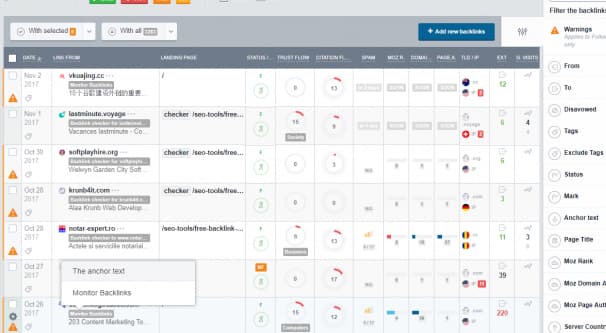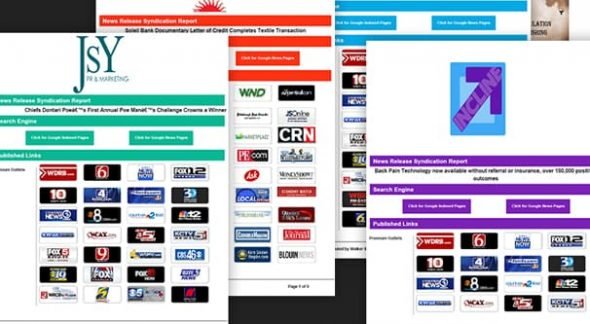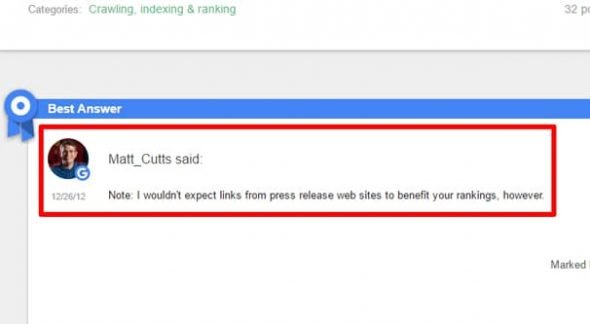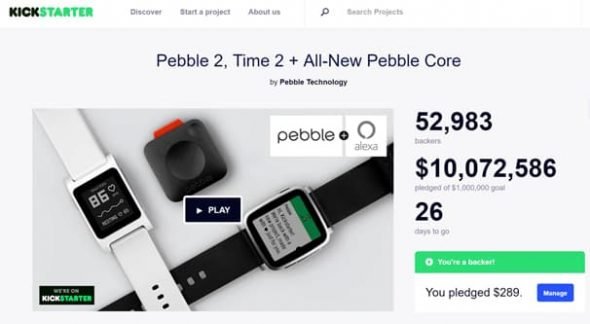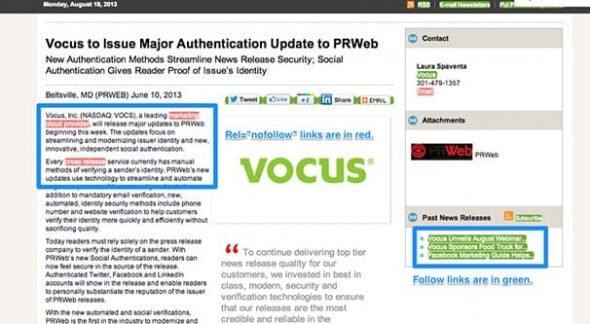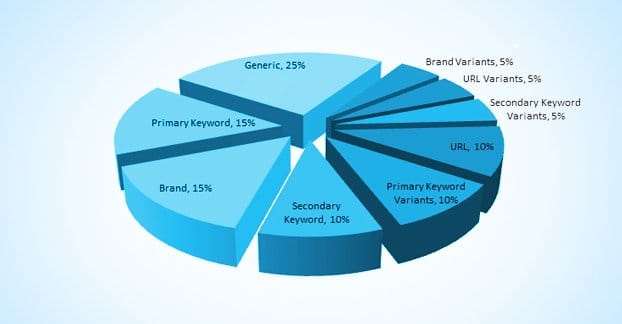Press releases are fairly similar to guest posts, with a few key differences. I’ve covered those differences before – see that link – but one aspect I haven’t covered is the links. With guest posting, a lot of the value you get from a post is a link, either in a bio or in the text itself, pointing back to a piece of content on your site. Do links from press releases have any inherent differences? Are they good for SEO or not?
Links and SEO
As with everything involved in SEO, there’s not really a clear-cut answer, as much as myself and other marketers like to try to compose one. Links are important, even foundational to SEO, but the way links work varies from site to site.
At the very core, a link can be thought of as a sort of vote of confidence. If Site A links to Site B, Site A is telling its users – and Google – that Site B has something of value on it. That’s the basis of how links are interpreted by search engines, and thus why they’re important to SEO.
Of course, since this was easily abused, a lot of additional tweaks and rules have been laid on top of this basic foundation. Google performs content analysis on both Site A and Site B, to figure out if they’re relevant to each other. The more relevant the two pieces of content are, the more beneficial a link will be. See these examples:
- A site about plumbing links to a site about blog writing. Not very relevant outside of very narrow contexts, so the link isn’t very useful.
- A site about plumbing links to a site about electrical work. Potentially relevant in a larger handyman or home improvement context, and thus the link is potentially valuable.
- A site about plumbing links to an advanced tutorial on installing a sink. The topics match closely, so the link is likely to be quite valuable.
On top of this analysis, you have the Google determination of whether or not either site in question is a spam site. If one of the sites has stolen content on it, or has a lot of SEO penalties, or is otherwise considered a detrimental site – something users don’t want to find in their search results – any site it links to will find no value from the link. In some cases, such as when the spam site is known to sell links or is part of a private blog network, the links can even be detrimental.
Then you have the meta attribute, follow or nofollow. Every link is, by default, a followed link. Some plugins, like comment plugins or link managers, will add site-wide defaults to make links nofollowed. Many sites that accept guest posts will default to nofollowing links.
Adding the nofollow attribute to a link means that Google will see that the link exists, but the link will not pass any value. For the purposes of direct SEO value, the link may as well not exist. You still get other benefits from the link existing, like implied association between two sites, or the traffic passing from one to the other, but you don’t get direct SEO juice from the link.
As you can see, links can be pretty complicated. Now let’s take it one step further; are press release links any different from other kinds of links?
Press Release Links
Years and years ago, before the advent of the internet, press releases were physical documents. A company would draft up a press release and send it out to all of their major news outlets, whenever something important was going on. The launch of a new business, the opening of a new retail outlet, the release of a new product; they would lead with a press release.
The purpose of a press release was to get some member of the press to contact the business and cover the new event. Each news outlet would, ideally, write an article for their publication covering the business that sent the release. Some of them would cover just what was in the release, while others would go deeper into interviews or details they might think most relevant to their readers.
The entire purpose was to build awareness. The more publications that cover the event, the more people know about it when it happens, and thus the more successful the launch can be.
With the internet, press releases were suddenly able to access thousands or tens of thousands more publications – and millions more people – than they were in the physical age. With no cost of postage or printing, the barrier to entry was nothing more than an email. It became trivial to shotgun out press releases to get widespread coverage.
Like all things in marketing, this was obviously abused immediately. Sites would build lists of hundreds or thousands of locations to submit a press release to. Other sites would offer to let you pay them to do the distribution for you. Many sites, upon receiving a press release, would simply publish the release as-is.
You can see the problem when links get involved. If you can send out a press release to 1,000 sites and have 500 of them publish your press release as-is, they would publish the link you added to the press release. That’s a quick and easy way to build 500 backlinks. Even if they’re all very minor and providing very little relevant value, that’s still a lot of links and can help boost your SEO.
As a side note, though a relevant one, this was no different than the early days of guest posting either. Before 2011 and the Google Panda update that destroyed duplicate and thin content strategies, a viable form of link building was to submit a single guest post to hundreds or thousands of websites. Any number of them could pick it up and publish it, and all of those links would point back to your site. It didn’t matter, then, that the content was identical on all of them.
These days, there are a lot of algorithmic filters in place to prevent this kind of duplicate content abuse. All of the link analysis, all of the duplicate content filters, all of the thin content filters; they serve to reduce the success rate of such widespread link spam techniques.
The fact is, though, that press releases are really no different than guest posts or any other form of blog content online today. They’re still a piece of content with a link in it that points back to your site. This content is subject to all of the normal rules about content online. Duplicate content hurts the site publishing it second. Many links from duplicate sources will seem quite a bit like spam and will be devalued.
Modern Press Release SEO
To go back to the initial question now, with a bunch of context added, I can provide an answer. Press release links are exactly as valuable as any other link in the same situation, which is to say, wildly variable in value.
The purpose of a press release has shifted back to its original goal of attracting the attention of the press. This is why so many of the sites that allow you to send out a press release to hundreds of media outlets are generally going to get you nothing in return. The majority of the media outlets they submit your press release to are low-tier blogs, foreign language blogs, PBN blogs, and other worthless sites.
To figure out if a link from a press release is worthwhile, you need to look at the site that would be posting the link. Consider these factors:
Is the publication relevant to your niche? A site that isn’t relevant isn’t going to give you any value. If you submit your press release about an event in California to a site based in China, that coverage is unlikely to be worthwhile.
In fact, you can see this kind of abuse often on Kickstarter. You’ll see mid-tier Kickstarter campaigns that have big block graphics that include the logos of all of the publications that covered their campaign. It’s a version of social proof intended to make a backer feel like the campaign is less of a scam than it might otherwise be. When you look a little closer, though, you can see a few inconsistencies. For example, if you go to Google any of the publications, you’ll find that they’re tiny sites with no readership, in a foreign language, or likely part of a PBN.
What happens is the campaign owner submits their press release to any of the services that allow you to pay $100 to submit to “thousands of sites” or what have you, then simply pastes the results in a graphic. The majority of that coverage is worthless for social proof, just like it’s worthless for SEO.
Is the publication going to post the press release as-is? Posting the press release instead of covering it in an article is going to lead to duplicate content. Any good publication is going to go over a press release and first decide if it’s something they even want to cover. A press release submitted for Forbes, for example, will be forwarded to the appropriate channel editor – or ignored if it’s sent to the wrong editor, straight up – where that editor can decide if it’s something they want to cover. They can then choose to create a piece of content, interview your company, or assign a writer to do that for them. As a consequence, a link from Forbes is going to be incredibly valuable, as will the social proof of saying “hey, we got coverage on Forbes.”
Meanwhile, if you submit a press release to Joe’s Plumbing Shack, and Joe just copies and pastes the thing into his blog and hits publish, what good is it? Even if your press release is a very relevant plumbing topic, it’s still just a basic press release. It might give you a miniscule amount of SEO juice, or it might conflict with all the other people who did the same thing.
Is the publication going to post a link at all? Many modern sites are very wary of posting links, especially unsolicited links, and they might just mention your brand by name with no link involved.
It’s not uncommon for a site to strip any link out of a submitted piece of content. Some of them will do their own research and add in their own supporting links. Others are content to publish content with no links at all. Some will, of course, be perfectly fine publishing your links. The only way to tell for sure is to do some reading into your target and see if they have any policies, or if you can find any examples of previous press coverage and how it was treated.
Is the publication going to nofollow their links? Most publications these days will nofollow their links on general principle. This is probably going to be your most common occurrence, so you should assume that by default your links aren’t going to have SEO value.
How to Get Value from Press Releases
If you want to make sure your press releases bring value, you need to do a few things. First and most importantly, you need to do your research. Figure out which publications you can target that will be worth targeting. Big name generalist publications like Forbes or VentureBeat are good targets. Smaller sites that are within your industry are also good targets.
To this end, I generally recommend that you avoid any of those sight-unseen mass-posting sites. They cost money to submit and they probably won’t get you much in the way of returns.
You also need to make sure you’re providing some avenue for value from a press release that isn’t reliant on the link. A nofollowed link can still bring in users, so you can set up a landing page to capture preorders, registrations, or opt-ins to a mailing list.
Regardless, submitting press releases can have SEO value, but it really depends on the target site and how they treat your information and link. You can’t know for sure ahead of time, you just need to do your research, submit a press release, and see how it goes.
 ContentPowered.com
ContentPowered.com
